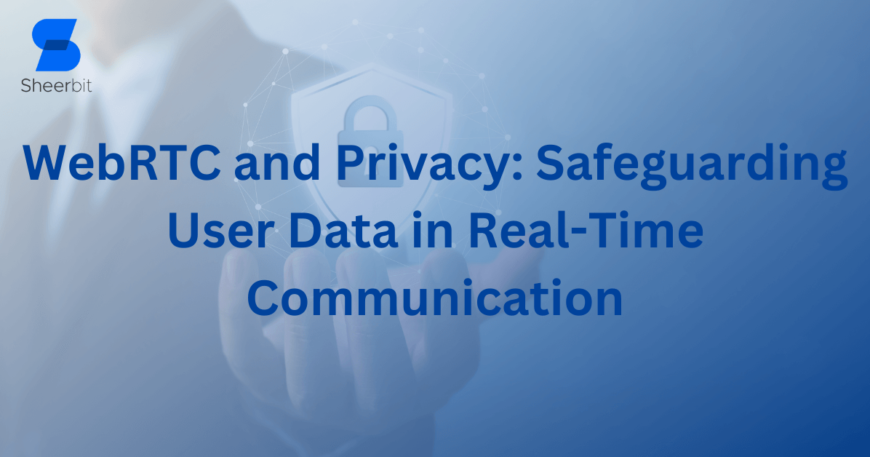The protection of user data becomes critical in the dynamic environment of the modern digital era. Defined by an ever-growing network of connections and a dependence on immediate communication. It is becoming increasingly essential to protect the confidentiality and integrity of user information as we go through this connected age. Against this background, WebRTC (Web Real-Time Communication) presents itself as a game-changing force, providing a novel way to enable peer-to-peer communication within web browsers. By overcoming conventional communication barriers, this technology allows for smooth interactions without the need for complicated program installs or extra plugins. The more we investigate WebRTC’s possibilities, the more apparent it is that we need to go. Beyond simple technical details to realize this revolutionary tool’s potential for communication fully. We also need to understand how to delicately balance privacy and security thoroughly.
Unraveling WebRTC: A Closer Look
WebRTC is an innovative project that opens up new avenues for online connection. By enabling direct communication channels between browsers without installing additional software or plugins, which can be a hassle. This revolutionary technology offers developers unmatched adaptability in addition to streamlining the communication process. WebRTC transforms the digital environment by seamlessly incorporating file sharing, online gaming, and video conferencing into web applications. This gives users an enhanced and engaging online experience.
But underlying its easy-to-use design is a maze of intricate details that require close attention, especially when safeguarding private user information. WebRTC makes real-time communication more accessible, but there are inherent privacy and security issues with its implementation. Developers must navigate the complexity of data encryption, identity verification, and secure signaling. As they employ WebRTC to construct cutting-edge apps and keep user data safe from attacks and vulnerabilities. Therefore, even while WebRTC has the potential to transform online communication completely, it also emphasizes how important it is to have strong privacy and security measures in place to protect users’ confidence and trust when using the internet.
Navigating Privacy Challenges with WebRTC
WebRTC’s decentralized architecture presents inherent privacy problems even as it facilitates smooth communication. The following is a summary of important factors and precautions to take while protecting user data:
1. Encryption Essentials:
The foundation of WebRTC data security is encryption. Developers may enhance user confidence in the platform’s security measures by ensuring that communications are protected from prying eyes through solid encryption protocols such as DTLS and SRTP.
2. Identity Verification Protocols:
Putting in place identity verification procedures provides an additional degree of security against unwanted access. Users’ identities can be verified in WebRTC sessions using secure tokens, certificates, or federated identity providers. To lessen the chance of impersonation and unwanted intrusion.
3. Fortifying Signaling Channels:
The signaling mechanism, which starts and maintains communication sessions, necessitates careful consideration of security. Data transfer is encrypted when HTTPS is used for signaling communication. This prevents potential assaults and maintains the integrity of the communication channel.
4. Granular Permissions Management:
Giving consumers fine-grained control over their privacy preferences promotes openness and trust. Enabling users to customize their experience based on their privacy choices by managing permissions for sensitive resources such as cameras and microphones improves their overall pleasure and trust in the platform.
5. Continuous Vigilance through Audits and Updates:
The dynamic nature of the digital ecosystem is typified by constantly changing vulnerabilities and threats. WebRTC deployments must undergo routine audits and upgrades to remain ahead of possible security threats. Developers may efficiently protect user data and maintain the integrity of their apps by being proactive and responsive to new risks.
Real-World Applications of WebRTC Security
The significance of WebRTC security is emphasized by its many uses in various sectors, which goes beyond theoretical concerns. WebRTC makes secure telemedicine consultations possible, guaranteeing that private medical information is kept safe during virtual consultations in the healthcare industry, where patient confidentiality is paramount. Similarly, WebRTC powers encrypted video conferencing solutions for remote banking services in the financial sector, protecting sensitive financial data from interception and unauthorized access.
Emerging Trends and Future Directions
Our approach to privacy and security in real-time communication must change as technology does. It is anticipated that new developments like as end-to-end encryption and decentralized architectures would reinforce the security posture of WebRTC apps. And it allows users greater control and confidence about their data. Furthermore, incorporating machine learning and artificial intelligence algorithms can proactively detect and alleviate security risks in real-time. Enhancing WebRTC ecosystems’ resistance against constantly changing cyber threats.
Conclusion
The potential of WebRTC is evident in the constantly changing field of digital communication, as it presents unmatched chances for smooth communication and cooperation. But to keep this promise, there must be an unwavering dedication to security and privacy. Through implementing encryption, identity verification, secure signaling, permissions management, and proactive maintenance procedures, we can effectively use WebRTC’s capabilities and foster a transparent and trustworthy culture.
Get in touch with us right now to find out how our customized WebRTC solutions can strengthen your apps while protecting user data. Let’s embark to set out on a cooperative adventure to develop robust, reliable communication systems that put users’ security and privacy first. One safe link at a time, let’s work together to influence real-time communication in the future.





